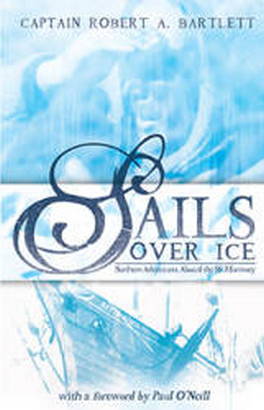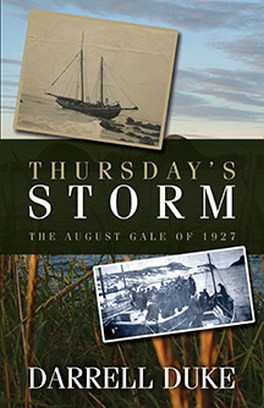Sails Over Ice picks up where The Log of Bob Bartlett left off. Between the years 1925–1933, Captain Bob Bartlett and the Morrissey explored coastal Greenland and much of Northern Canada, harvesting scientific specimens and Inuit artifacts for North American societies and museums and collecting Arctic mammals for zoos. This world-famous captain from Newfoundland never lost a single soul on either of these trips. Most believe that Bartlett’s contribution to exploration and natural science is without equal.
Forty years ago a workman in the yard of J. F. James and Sons, on the banks of the Essex River, drove a last swift blow with a sledgehammer under the keel, and a schooner slid gracefully into the water. No more graceful, trim, staunch nor able craft than the Effie M. Morrissey, which was her name, was ever launched from this famous shipyard, and the men who built her knew it. In that day shipwrights built sailing vessels with a real pride in their work, and with more than a touch of genius. I believe that any modern schooner would have broken to pieces in a twentieth of the pounding the Morrissey has taken. No one anywhere builds vessels like the Morrissey now.
No gasoline or diesel engines for her; no fancy wire rigging; no turnbuckles. She was just a good, honest, beautiful craft. Her masts were 74 and 76 foot sticks from the pine forests of Maine, and her booms, gaffs, and bowsprit came from the same place. Locust treenails and Swedish iron fastening the white oak knees and stanchions and the white pine deck made the whole one common bond of security.
No one knows the merits of the Morrissey better than I, for I have taken her all over the North Atlantic and Pacific in summer, autumn, spring, and winter gales, and I have found her living up to the fullest and finest traditions of her master builder. He did his work well, and when the northwesters came howling out of the Arctic, and down across the Canadian shores with the power of unlimited momentum behind them, the Morrissey never failed to justify my faith in her. I loved that schooner the first minute I clapped eyes on her, and that feeling has grown ever since.
She was built for old Skipper Morrissey, the most famous fish killer of his day in Gloucester, and the best was none too good for him, or for the gang that shipped with him. He wanted her for the Grand Banks. Those were the days of iron men and wooden ships, and what a team they were! Where Skipper Morrissey wanted to go, his schooner took him – yes, and brought him back, too, all shipshape and Bristol fashion.
I remember one of my bos’ns in a gale in the Gulf Stream saying, “What a schooner! What a schooner! With all this deckload and canvas and the engine going in this blow, and no pumping. Why, sir, last winter in a brand new two-masted schooner running rum off the Long Island coast we had the pumps going all the time. But she was not from Essex, Massachusetts, sir.” A yard doesn’t get a reputation like that without earning it, but when it turns out vessels like the Morrissey it can’t help having a good name.
How did I come to own the Morrissey? The answer to that question is a story, and here it is.
A lively collection of yarns from a great story-teller.-- The Northern Mariner --
Prose that is crisp, muscular yet humorous. . . . Bartlett was a good writer and he is at his most eloquent when describing a life under sail.-- Atlantic Books Today --























